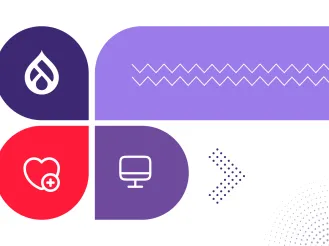How Enabling Students to Self-Serve Can Transform Your Admissions Operation
Authored by: Laura Ballay & Bjorn Thomson
Gone are the days when prospective students were willing to submit an inquiry and wait to hear back from an admissions representative. Today’s students are accustomed to encountering the world through their screens first and foremost. They expect to easily find answers to common questions and digest information on their schedule. Whether that’s spending 45 seconds scrolling your majors and minors while waiting in line for the bus or tuning in to a virtual tour while on a work break, students want to consume information when and where it suits them.
The upside for the busy admissions counselor? Fewer phone calls answering basic, repetitive questions. Less time spent with casual prospective applicants whose needs don’t align with what your school offers. And more time to focus on following up with serious applicants who would be the ideal fit for your community.
So, if you want to increase right-fit applications to your institution and streamline your admissions processes, then leveling up student self-service functionality on your site is key. Here’s what to consider.
Improve Findability: Empower Students to Find What They’re Searching For
We’ve all been there — unable to find what we’re looking for on a website. It’s frustrating. And it’s also one of the most common reasons site visitors leave. So how can you ensure students are able to find what they’re searching for and ultimately guide them toward applying? Start with gathering insight in four ways.
- Survey your admissions team. Ask your admissions counselors to track the common questions they field from prospective students. Make sure the answers to these questions are easily searchable and findable on your website.
- Conduct user testing. Discover actual search and navigation patterns of prospective students through testing. No need to find several dozen participants. Involving five users to test your site will give you the insight you need.
- Use Google Analytics. Track browsing behaviours, common search keywords, and most viewed pages to analyze what students want from your site.
- Create a heatmap. If wading through complex data sounds overwhelming, use a tool like Hotjar to create a heatmap that will give you at-a-glance insight. Heatmaps use graduated hot and cool colours to illustrate which parts of a page are more or less popular, making it easy to see what students do and don’t look at on your site.
Now that you know what questions students are asking, what they are looking for, and how they are interacting with your site, you will be equipped to build out your website’s functionality with these insights in mind.

Paint a Picture: Use Your Website to Help Students Envision Their Future
Your website isn’t just about answering questions. It’s about giving prospective (and current) students the ability to envision a bright future for themselves. Although your admissions counselors play a vital role in inspiring students, your website sets the stage long before your admissions team has the chance to have a conversation. And in fact, more and more students are completing the entire admissions process without ever talking directly to an admissions counselor. So it’s important to design your website with a heavy dose of storytelling in order to draw students in, capture their imagination, and motivate them to apply.
Whether your prospective student is a traditional 18-year old who is eager for the full residential experience or an adult learner juggling family, work, and higher education aspirations, it’s your website’s job to show them what’s possible. Your self-service functionality needs to meet each student where they are and support them throughout their unique journey. It’s important for each type of student to also see examples of students like them successfully navigating life at your institution.
But remember, you must deliver the information in small snippets. Students simply aren’t devoting hours to fully scouring your site. Rather, their overall experience is broken down into a series of micro-interactions that lead them to determine whether your school is a good fit for them.
Creating Content That Students Will Consume
So how can you feature compelling, bite-sized content that students will actually absorb? While also keeping in mind the ultimate goal of increasing right-fit applications and admissions decisions?
- Cull your existing content. Your site is probably chock-full of good information. But if you’re like many colleges and universities, pages are long and text-heavy. Can you break up existing stories into multiple vignettes? Find the most salient sentences in a long video and cut them into a 30-second preview? Turn your alumni profiles into scrollable quotes and pictures? There’s so much you can do with what you already have.
- Get creative to attract specific audiences. Your website shouldn’t be one size fits all. Identify the types of students you want to attract and create custom content for each persona. Be mindful of inclusion and diversity. And be sure to think of your differently-abled audience. Find creative ways to reach them and demonstrate that they are important to your institution.
- Perfect your virtual open houses, tours, and visits. Students may not visit your campus in person to make a decision the way they would have in the past. Give them a realistic virtual experience to make them feel like they’re there.
- Use all media available to you. Microcopy. Podcasts. Video. Testimonials. Articles. Pictures. Say the same thing in multiple ways to make sure your message gets through. This is also important for inclusion since not all students are able to consume content the same way.
Be Their Guide: Digitally Lead Students from Application to Admittance and Beyond
Now that you have answered students’ questions and inspired them to apply, it’s crucial to lead them the rest of the way through the process.
- Demystify the Application. “Apply Now” buttons are often enigmatic. Therefore, students have no idea if the process will take them 15 minutes or 4 hours. Give them a preview of what to expect and what they will need to complete the process. And, be sure to divide the application into discrete tasks so they can complete one thing at a time and come back later if needed.
- Create Timely Prompts. Much like a GPS offers turn-by-turn directions, your website should provide students with just-in-time information that helps them navigate unknown territory. Don’t overwhelm students with a comprehensive checklist of everything they need to do from the time they apply to the time they enroll. Instead, use progressive disclosure to guide them along the path.
- Simplify Core Tasks. Pre-application, a prospective student’s core tasks likely include finding out how much your institution costs and how they will pay for it. But once they have decided to attend, they need to know the logistics. When is tuition due? How do they select classes? Where do they find their room assignment and roommate? What are the learning options available to them? Give students easy access to these questions all along the way.
- Remember Current Students. Current students still need to use your website, too. And in reality, current and prospective students often want to see the same kinds of content. So remember to offer current students easy access to their portal, highlight events that will be meaningful for them, and feature them as the stars of your website. After all, current students’ stories will help prospective students imagine their futures while reinforcing for current students that they made a great decision choosing your institution. It’s all connected.
“Contact Us” Still Matters: Foster Meaningful Connections Between Students and Admissions
No matter how seamless and frictionless your website is, students want to self-serve until they don’t. And you want to encourage and facilitate meaningful conversations between prospective students and your admissions team. So when the time is right, be sure your team is readily available and easily accessible. Be sure to create interactions that are personal, warm, and engaging so that students feel even better about your school after talking to someone in person.
The key is meeting each person where they are. Empower students to use your website to find answers to their questions, explore how their needs will be met at your institution, and complete each task autonomously as much as possible. But know when you need to be there for them, too. By striking the right balance, you can truly transform your admissions operation to continually meet students’ evolving needs.








